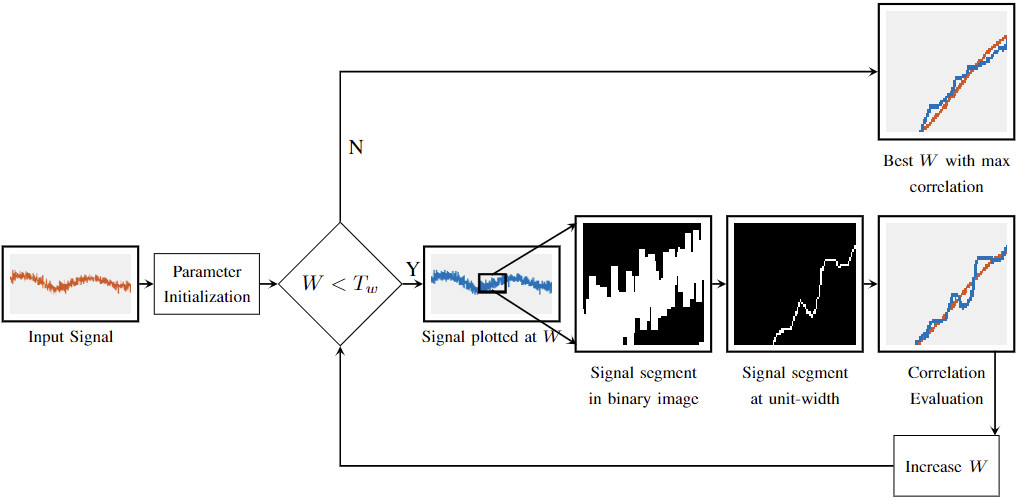
Research Projects
EEG signal processing from the computer vision perspective
In this work, we study the processing of EEG signals in the image domain, i.e., visualizing the signal in the binary image and applying computer vision techniques for signal smoothing and classification. Some research questions are being investigated:
- 1. How well can we smooth the signal in the image domain? Here, we plot the interested signal in binary representation at different line-width levels, then “thin” using some recent effective skeletonization algorithms. The process consists of plotting the signal at a high-level line width (upscale) and then at a unit line width (downscale); hence, the name Upscale and Downscale Representation (UDR) comes into play. The skeletonized signal is then converted back to the time domain for correlation evaluation.
- 2. How can UDR be implemented in classification models to improve detection accuracy? Here, we investigate the feasibility of implementing UDR as a smoothing filter for data pre-processing or in a shallow layer of a CNN to enhance the signal classification accuracy further using deep learning.

Interested research students are welcome to join. Minimum requirements: coding skills (MATLAB, Python for algorithm development and implementation), English reading and writing (to read papers and write reports, for now. Students are encouraged to strengthen their verbal skills as soon as possible).
Selected Publications
Q. M. Doan, T. H. Dinh, N. L. Trung, D. Nguyen, A. K. Singh, CT. Lin, Extended Upscale and Downscale Representation with Cascade Arrangement. Proceedings of the 22nd IEEE Statistical Signal Processing Workshop (SSP 2023), 2023, pp. 715-719.
Other information
Co-PI: Dr. Dinh Tran Hiep



